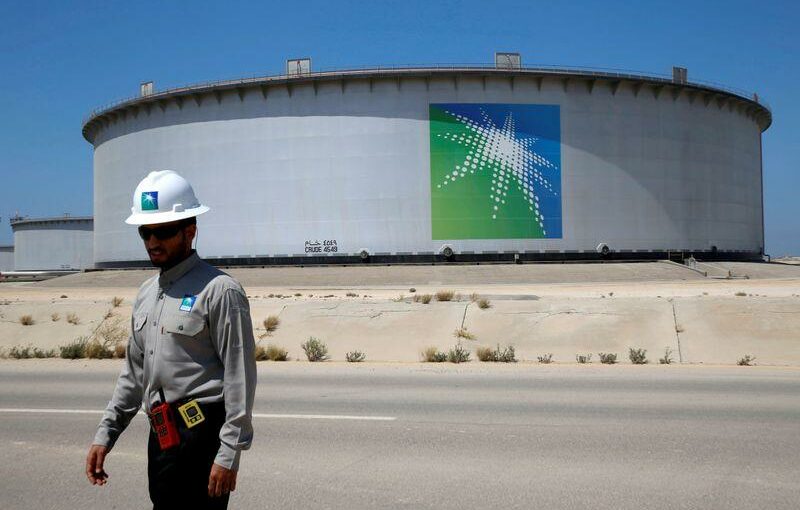DUBAI (Reuters) – Saudi Aramco has asked banks to extend by a year a $10 billion loan it raised last May, two sources familiar with the matter said, suggesting that rebounding crude prices are not pushing the oil giant to reduce debt for the time being.
The sources confirmed a report by Loan Pricing Corporation, a fixed-income news provider owned by Refinitiv.
It is at the banks’ discretion whether to extend the loan, but lenders will likely agree in order to maintain a good relationship with Aramco in the hope of receiving future business, LPC said citing a banker.
One of the sources, who confirmed the report, echoed that, saying: “It’s Aramco. Why not?”
Aramco declined to comment.
LPC cited a banker as saying it was possible Aramco would try to push down pricing by arguing that market conditions have improved since May, when oil prices were much lower and there was much uncertainty about the pandemic.
The loan started at 50 basis points over LIBOR, a rate that steps up as more money is drawn from the facility, one of the sources told Reuters, adding Aramco could try to reduce pricing by 10 to 15 bps.
Brent crude futures settled at $66.13 a barrel last week. In May last year they were trading at around $30 a barrel, as global demand plunged due to the coronavirus crisis.
Sources told Reuters last year that Aramco would use the loan to back its acquisition of a 70% stake in Saudi Basic Industries Corp (SABIC) from Saudi Arabia’s Public Investment Fund, a deal worth almost $70 billion.
LPC had previously reported, citing a banker, that the loan would be repaid with the proceeds from a bond sale by the fourth quarter of 2020. That did not happen, even though Aramco raised $8 billion in a multi-tranche bond deal in November.
Saudi Aramco’s profits plummeted last year, but it stuck to a promised $75 billion annual dividend, most of which goes to the Saudi government.
HSBC said this month that Aramco’s prospects look more positive and promising for 2021, hinting at declining net debt and a possible dividend hike.
Source: Read Full Article
